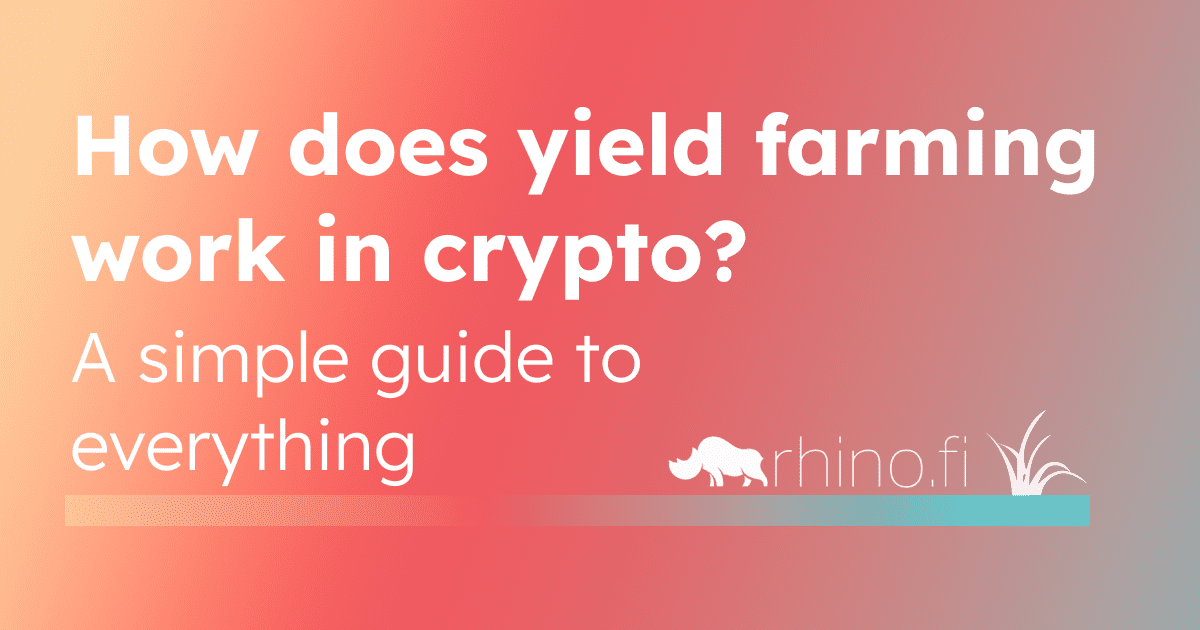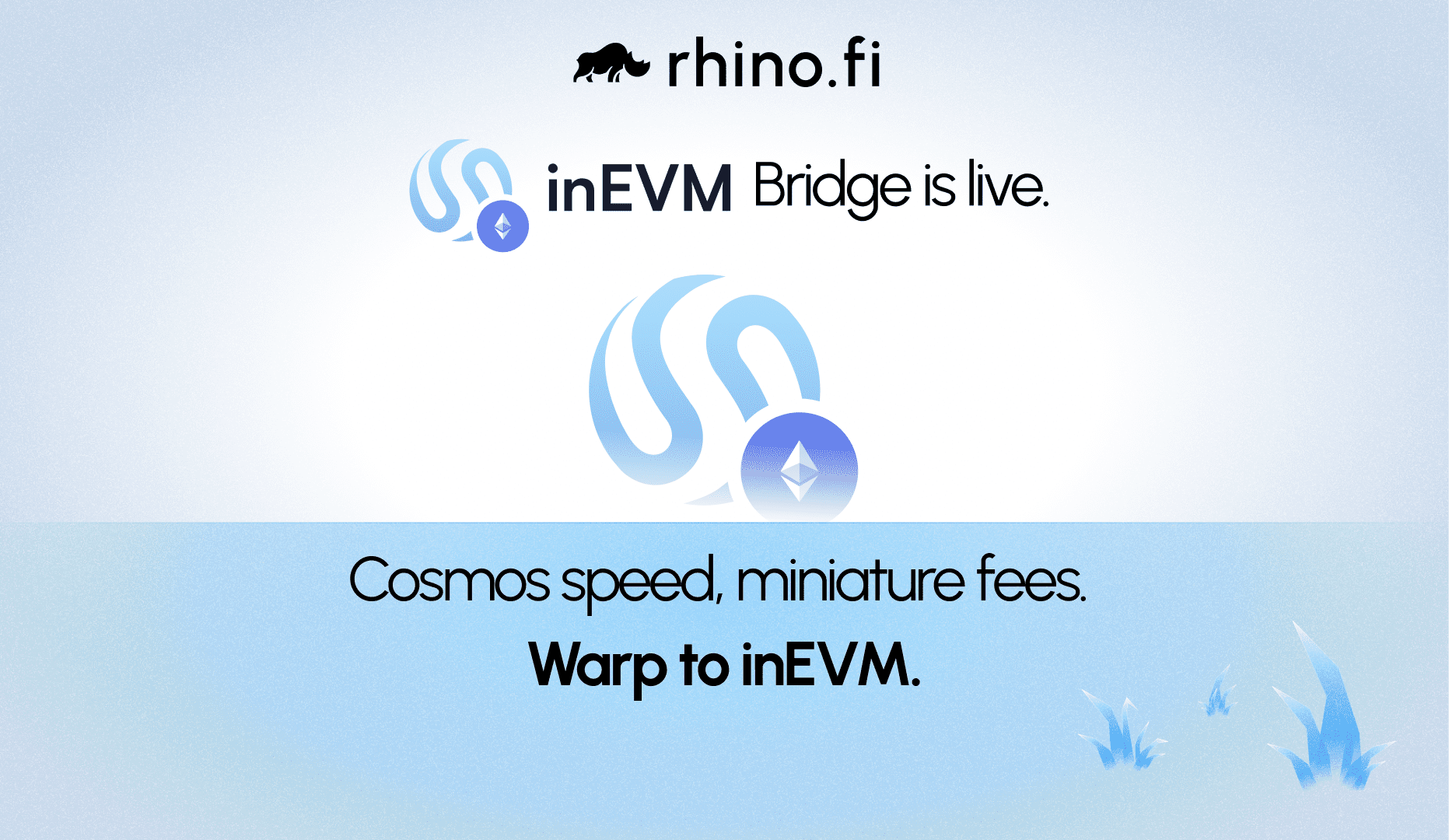Similar to how a bank pays you interest on your fiat savings, you can earn interest on your cryptos by lending or committing them to a project.
This concept is known as yield and it’s central to the emerging world of Decentralised Finance, or DeFi, which rebuilds traditional financial instruments using free, permissionless technology.
So, how does yield farming work?
In crypto, yield farming refers to the process (some would describe it as an art) of constantly rotating your funds between different yield opportunities in search of the highest APY.
There are four specific ways to earn yield in crypto right now:
- Lending. Often, you can lend your tokens to a protocol directly. This protocol will enable other users to borrow these funds, using their existing assets as collateral, and provide interest to lenders from the trading fees. The interest typically fluctuates and is based on supply and demand.
- Borrowing. Yep, you can earn rewards from borrowing, too. Specifically, you can use one token as collateral to borrow another token, which you can then invest into yield opportunities. So you keep your original tokens and open up a fresh source of income.
- Staking. Staking refers to the concept of volunteering your computer to validate transactions, and ‘staking’ (committing) tokens as collateral in return for a share of transaction fees. This option is available on Ethereum and other blockchains that use proof-of-stake validation, such as Solana, Cardano and Polkadot.
- Liquidity provision. DeFi has pioneered the concept of liquidity pools, which are controlled by smart contracts and enable users to trade or borrow assets without a partner on the other side of the trade. These pools need large amounts of tokens to ensure deep liquidity, and you can meet this need by depositing a pair of tokens into the pool. Again, you’ll receive rewards based on the pool trading fees.
You can either focus on one of the opportunity streams above, or pursue a combination of lending, staking and liquidity provision to secure a balanced mix of income.
If you wish to build a yield farming strategy, the exact size of your returns will depend on how much you deposit into each opportunity, what your tokens are used for, the total rewards on offer, and the perceived default risk of your various investments.
What is guaranteed in DeFi, however, is that the entire process is self-custodial. The use of smart contracts means you retain control of your funds at all times, without trying to trust a potentially biased or corruptible human.
What’s more, you can typically ‘cash out’ or unlock your deposited tokens far more easily than is possible in fiat, so you can move seamlessly between several different yield farming opportunities in pursuit of the highest returns.
Ok, but why would a DeFi project want to borrow my tokens?
Sometimes, DeFi projects and protocols have a large stock of tokens that their customers can tap into. However, niche and less established projects may not have this sort of liquidity to call on. So if they want to lend to their users or create a viable trading experience with minimal price slippage, they will need to borrow the tokens from a third party.
If you want an example, check out the case of Compound Finance, a DeFi project that provides trustless loans to crypto holders. Shortly after its launch in 2018, Compound had amassed $100m in tokens on its platform. This figure might sound substantial, but it was spread over several tokens, so the supply of each token was relatively small and any significant increase in borrowing would cause a sharp rise in interest.
So Compound launched a new token, $COMP, and provided it to all borrowers and lenders. The more people lent or borrowed, the more they would earn, and fees were shared between both token-holders and liquidity providers.
This created a virtuous circle whereby liquidity providers and borrowers rushed to lend and deposit tokens, which led to a jump in both borrowing and tokens deposited. This added to the value of the COMP tokens, which in turn increased the rewards for both lenders and borrowers.
Where can I yield farm?
The early stages of yield farming have been dominated by a handful of popular, battle-tested protocols such as:
- Sushi (Formerly SushiSwap). Current APY 0.93%-77.72%. Sushi enables users to trade over 400 tokens and has created more than 40,000 pairs, so there are loads of options for liquidity providers.
- Curve Finance. Up to 150%. Curve pioneered the concept of liquidity pools and automated market makers (AMMs), and now it’s one of the biggest names in yield farming. The protocol specialises in stablecoins and low-volatility assets, which would ordinarily lead to low returns, but Curve also provides its own CRV token as an additional incentive.
- Balancer. 0.21%-377.09%. Again, Balancer provides liquidity pools powered by AMMs. Users can create their own pools based on the assets in their portfolios.
- Yearn. 2.03%-34.34%. Yearn enables you to deposit your tokens into staking or liquidity provider vaults, or you can lock your tokens for governance votes (and even sell your voting rights).
Now, however, the focus is shifting towards battle-tested aggregators such as Beefy Finance, a multi-chain yield optimiser which provides opportunities across 18 different chains and presents them in a simple interface, so it’s a great option if you’re not sure how to start yield farming.
And, of course, there’s rhino.fi. We offer a string of carefully curated opportunities spanning staking, lending and liquidity provision across different chains. Using our cross-chain technology, you can access these protocols directly or go via our partners, such as Beefy. And we’ve made sure that each opportunity is legit, so it provides genuine income using tried-and-tested methodologies.
More information
If you would like to know more about how to yield farm or do anything else in crypto, you can visit us on Twitter or Discord.
And if you’ve enjoyed this article, you might also want to take a look at the following guides:
How we calculate impermanent loss.
How cross-chain yield farming enhances the possibilities of yield farming.




